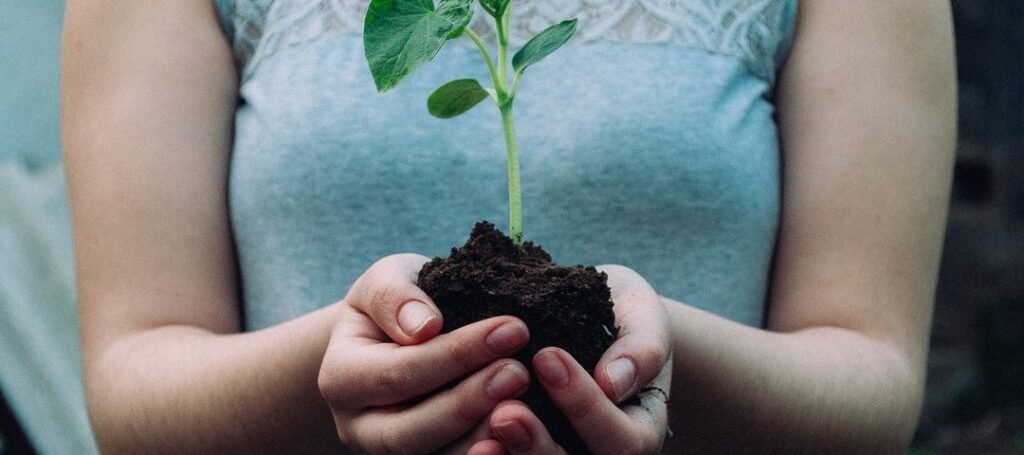
My garden is my happy place. I adore everything about it—from planning and starting seeds indoors to digging in the dirt. But if you’re just starting out, gardening can feel a little overwhelming.
So whether this is your first year or you’re a beginner who felt totally swamped last season, here are 11 tips to help you save time, energy, and resources—and avoid biting off more than you can chew.
11 Tips for Beginning Gardeners
Gardening for Beginners: Get ready to grow your best garden yet!
1. Start Small
I get it—you want to feed your family all summer, preserve food for winter, or try every single seed from the catalogs. But trust me, a huge garden right off the bat will leave you drowning.
If it’s your first year, take it easy. Plant a few tomatoes, peppers, herbs, beans, lettuce, and maybe some onions. Learn how different plants grow and what they need. Try Square Foot Gardening to maximize a small space.
Keep your small garden weeded, watered, and pest-free. If this year goes well, you can expand a little next season.
2. Plant What You Eat (Mostly)
Love fresh tomatoes and salsa? Then grow tomatoes! Does your family hate potatoes? Skip ’em. If you only use peppers occasionally, one or two plants should do.
That said, homegrown food is always better. Ever tried a garden-fresh pea? There’s no comparison to the bland store-bought kind. Even picky kids might try new foods if they help grow them. And hey, gardening is a great excuse to expand your own tastes!
Your menu might never include kale or chard—unless it’s growing right outside, begging to be used. Once you get comfortable, don’t be afraid to experiment!
3. Plant for Your Climate
Your growing zone is key—it determines what you can plant and when. In colder climates, focus on cold-hardy crops and short-season varieties. In warmer areas, you can plant heat-loving veggies much earlier.
When picking seeds, check the days to maturity and ideal growing zones.
4. Pay Attention to Plant Spacing
I get it—we all want to cram as many plants as possible into our gardens. But overcrowding invites pests, disease, and weak plants competing for light and nutrients.
You can sometimes squeeze plants a little closer than seed packets suggest, but make sure they have enough space and sun. Vertical gardening is another great space-saver.
5. Use Mulch
Weeds are every gardener’s nemesis. They grow fast and can choke out your plants in days. If you don’t want to spend hours pulling weeds, mulch is your best friend!
Mulch smothers weeds, prevents soil loss, and locks in moisture. You’ve got options—wood chips, grass clippings, straw, or plastic. Whatever you choose, cover that soil!
6. Write It Down!
Don’t rely on memory—keep a garden journal. Sketch your layout for crop rotation, track pests, note what worked (and what didn’t), and label your plants.
Some seeds take forever to sprout, and you might forget what you planted where. Labeling varieties helps you track which ones perform best—no point wasting money on duds!
7. Learn Your Plants (And Your Weeds)
Ever nurture a “corn seedling” for weeks… only to realize it’s grass? Get familiar with what your plants look like as seedlings—so you pull weeds, not your veggies.
Also, learn to spot weeds early (though some “weeds” are actually edible greens!).
8. Amend Your Soil
Healthy soil = healthy plants. Poor soil = weak, struggling plants. Before planting each year, mix in compost or well-rotted manure.
Feed your soil with compost tea, Epsom salts, or chopped leaves at season’s end. Your plants will tell you if something’s missing.
9. Be Ready for Pests
You can’t just plant and forget—pests will show up. Research companion planting and organic pest control. Be prepared to handpick bugs (but remember, a few holes in your kale won’t hurt—just cut them off!).
10. Don’t Forget the Flowers
Unless you’re only growing greens and roots, you’ll need pollinators. Flowers attract bees and beneficial insects—plus, they’re pretty and smell amazing!
11. Water Wisely
Plants need water—but not too much or too little. Most need a deep soak once a week. If rain doesn’t cover it, you’ll need to step in.
Water at the base (not from above) to avoid waste. Early morning or evening is best to reduce evaporation.
